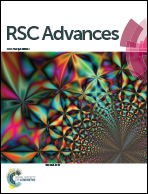Effect of influent COD/N ratio on performance and N2O emission of partial nitrification treating high-strength nitrogen wastewater
Abstract
The effect of influent chemical oxygen demand/nitrogen (COD/N) ratio on nitrogen removal and nitrous oxide (N2O) emission during partial nitrification treating high-strength nitrogen wastewater was investigated. Three laboratory scale anoxic/aerobic sequencing batch reactors (SBRs) were operated under different influent COD/N ratios (0.5, 1.0, and 2.5, respectively). Stable and high nitrite accumulation ratios around 90% were obtained at COD/N ratios of 0.5 and 1.0. A temporary high nitrite accumulation ratio (89.9 ± 1.04%) was observed at a COD/N of 2.5 (days 20–65), however, the main nitrogen species in the effluents changed from nitrite to nitrate afterwards. Despite the many benefits of the partial nitrification process, the significant generation of N2O, a potent greenhouse gas, remains a problem for this innovative and promising process. Attempts to minimize N2O emissions during the partial nitrification process by increasing the anoxic/aerobic phase fraction were conducted, and it was found that the N2O emission quantity was reduced by 50.6% and 46.2% in SBR with influent COD/N of 0.5 and 1.0, respectively. This was because a longer anoxic phase benefited nosZ gene expression and resulted in higher abundance of heterotrophic microorganisms.


 Please wait while we load your content...
Please wait while we load your content...